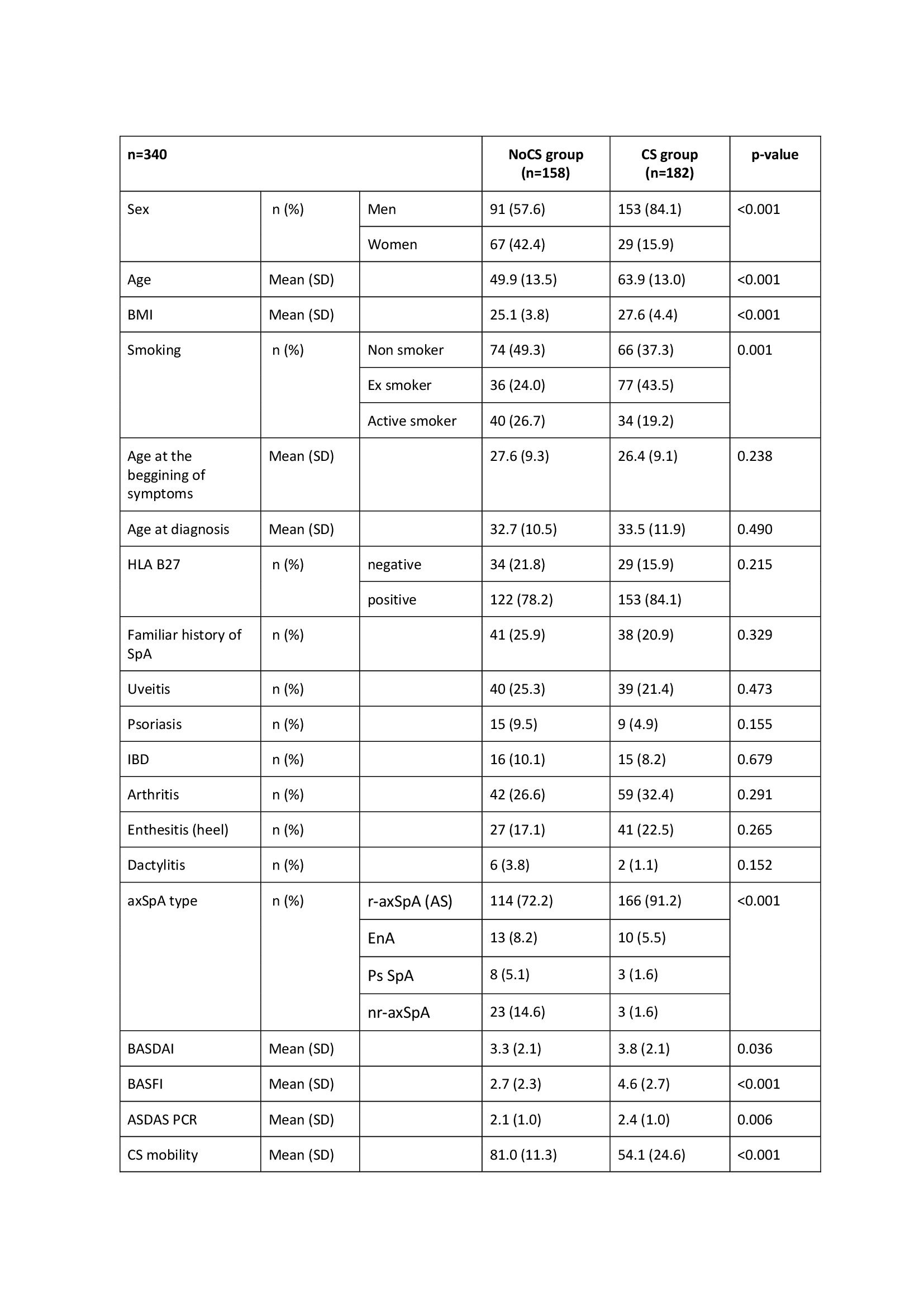Session Information
Session Type: Poster Session C
Session Time: 9:00AM-11:00AM
Background/Purpose: The study of the cervical spine (CS) in axial spondyloarthritis (axSpA) and its radiographic characteristics including the zygapophyseal joints (ZJ) may be helpful for early diagnosis, establishing a prognosis and sharpening treatment choices.
The aim of this study is to describe the prevalence and characteristics of CS involvement in a cohort of patients with axSpA and its associated factors, who have been followed up in the Rheumatology Department of a third level university hospital.
Methods: Descriptive, retrospective and unicentric study. Patients with an axSpA diagnosis based on the ASAS classification criteria, from March 2011 to December 2022, retrieved from a dedicated axSpA database were included. Sociodemographic, clinical, radiographic and therapeutic variables were gathered. They were separated into two groups according to CS involvement; “CS group” as patients with BASRI≥2 in CS and/or a score ≥3 in ZJ measured by De Vlam method (1); and “no CS group” as controls.
Results: A total of 340 patients were included (71.8% men; mean age 57,4 ± 14,9 years). CS involvement is common among axSpA (n=182; 53,5%). ZJ involvement was observed in 99 patients (29,1%), and of those, 21 did not show concomitant structural damage in the vertebral bodies. A total of 83 patients (24,4%) had damage in the vertebral bodies exclusively, and 37 (10,9%) had CS involvement without radiographic involvement of the lumbar spine (LS) (29,7% women). Patients from the CS group were predominantly men, older, had a higher BMI and a higher prevalence of smoking (table 1). They also showed a higher disease activity (BASDAI and ASDAS-CRP), worse function (BASFI), worse mobility in CS and LS (Schober test), as well as more structural damage in both LS and sacroiliac joints. No differences were found between groups for HLA B27 positive, age at diagnosis, familiar history, presence of arthritis, enthesitis, dactylitis or extra musculoskeletal manifestations (uveitis, psoriasis or IBD).
Conclusion: The radiographic evaluation of the CS is relevant in axSpA, and it should be performed routinely, as well as the evaluation of the ZJ, as they are commonly involved in axSpA and related to higher disease activity and worse function.
To cite this abstract in AMA style:
Maymó p, Berbel Arcobé L, Michelena X, Narvaez J, Nolla J, Valencia L, Palacios J, Juanola Roura X. Cervical Spine Involvement in Axial Spondyloarthritis. Radiographic Characteristics and Associated Factors [abstract]. Arthritis Rheumatol. 2023; 75 (suppl 9). https://acrabstracts.org/abstract/cervical-spine-involvement-in-axial-spondyloarthritis-radiographic-characteristics-and-associated-factors/. Accessed .« Back to ACR Convergence 2023
ACR Meeting Abstracts - https://acrabstracts.org/abstract/cervical-spine-involvement-in-axial-spondyloarthritis-radiographic-characteristics-and-associated-factors/


